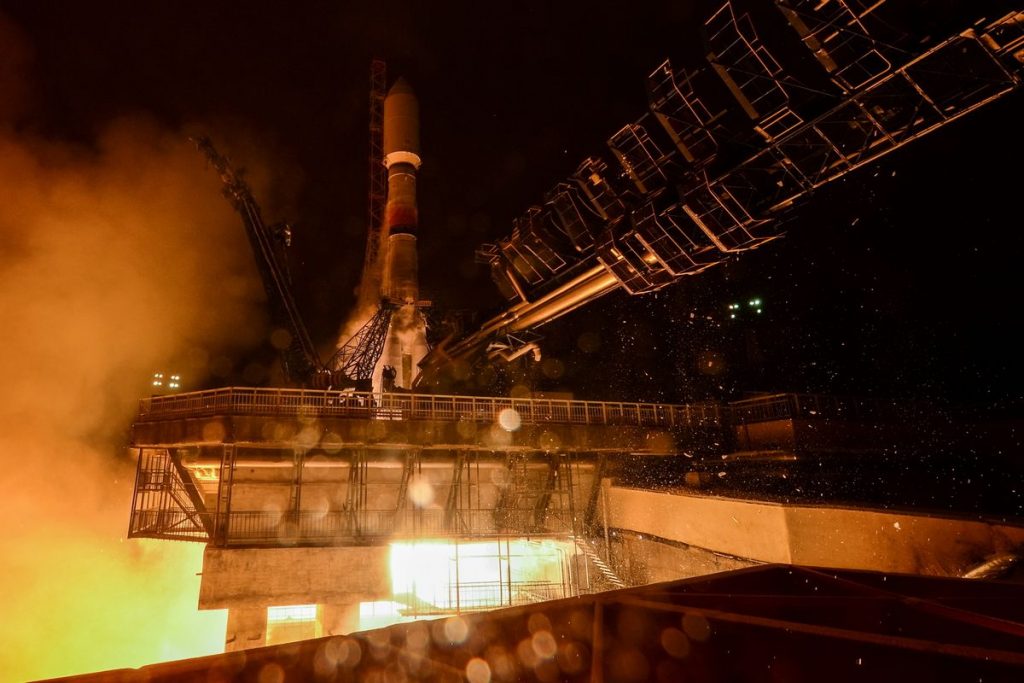
Russian Soyuz rocket launches 2 classified military satellites (Image Credit: Space.com)
Russia launched two more military satellites to orbit on Friday (Oct. 21), continuing a busy spaceflight stretch for the nation.
A Soyuz-2-1v rocket lifted off from Plesetsk Cosmodrome in northwestern Russia Friday at 3:20 p.m. EDT (1920 GMT; 10:20 p.m. Moscow time), carrying two classified payloads to orbit.
“According to unofficial posts on the Novosti Kosmonavtiki web forum, the rocket was expected to deliver a pair of new-generation military satellites designated 14F164 and 14F172,” Anatoly Zak wrote on RussianSpaceWeb.com (opens in new tab).
“These indexes were not associated with publicly known projects,” Zak added, “leaving the intended mission of the satellites unclear on the eve of the launch.”
Related: 14 things every cosmonaut does for launch
Astrophysicist and satellite tracker Jonathan McDowell, of the Harvard-Smithsonian Center for Astrophysics, speculated on Twitter (opens in new tab) Friday that the payloads may be “an experimental pair of military satellites, possibly to test out satellite inspection techniques.”
Russia is apparently no stranger to inspection tech. Its Kosmos 2558 spacecraft launched on Aug. 1 to an orbit very similar to that of an American spy satellite called USA 326, drawing condemnation from U.S. military officials.
Friday’s liftoff was the fourth for Russia in the last 12 days. A Soyuz launched a GLONASS navigation satellite from Plesetsk on Oct. 9, a Proton rocket carried a communications satellite to orbit for the Angolan government on Oct. 12 from the Russia-run Baikonur Cosmodrome in Kazakhstan, and an Angara rocket launched the small, mysterious EMKA-3 military satellite from Plesetsk on Oct. 15.
And more Russia liftoffs are coming in the next few days. A Soyuz is scheduled to launch three Goniets communications satellites and a demonstration broadband craft from Vostochny Cosmodrome on Saturday (Oct. 22), and another Soyuz is slated to send a robotic Progress cargo spacecraft toward the International Space Station from Baikonur on Tuesday (Oct. 25).
Mike Wall is the author of “Out There (opens in new tab)” (Grand Central Publishing, 2018; illustrated by Karl Tate), a book about the search for alien life. Follow him on Twitter @michaeldwall (opens in new tab). Follow us on Twitter @Spacedotcom (opens in new tab) or on Facebook (opens in new tab).





